二进制搜索树是一种数据结构,可快速使我们维护一个排序的数字列表。
- 之所以称为二叉树,是因为每个树节点最多有两个子节点。
- 之所以称为搜索树,是因为它可用于在
O(log(n))时间中搜索数字的存在。
将二分搜索树与常规二叉树分开的属性是
- 左子树的所有节点均小于根节点
- 右子树的所有节点均大于根节点
- 每个节点的两个子树也是BST,即它们具有以上两个属性
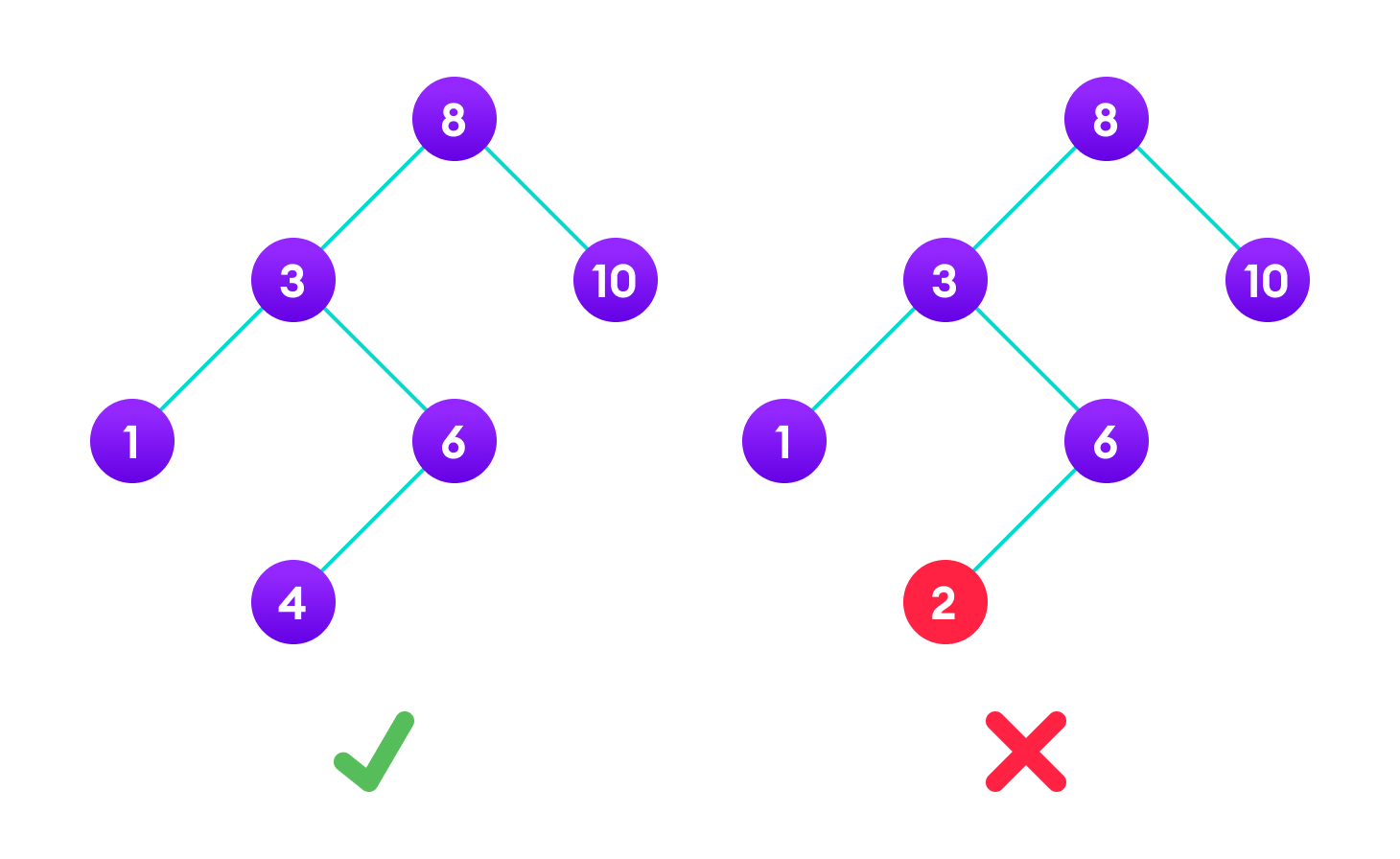
右边的二叉树不是二叉搜索树,因为节点“ 3″的右子树包含的值小于它。
您可以对二进制搜索树执行两个基本操作:
搜索操作
该算法取决于BST的属性,即每个左子树的值都低于根,而每个右子树的值都高于根。
如果该值低于根,则可以确定该值不在正确的子树中。我们只需要在左子树中搜索,如果该值在根的上方,则可以确定该值不在左子树中;我们只需要在正确的子树中搜索。
算法:
If root == NULL
return NULL;
If number == root->data
return root->data;
If number < root->data
return search(root->left)
If number > root->data
return search(root->right)让我们尝试通过图表将其可视化。
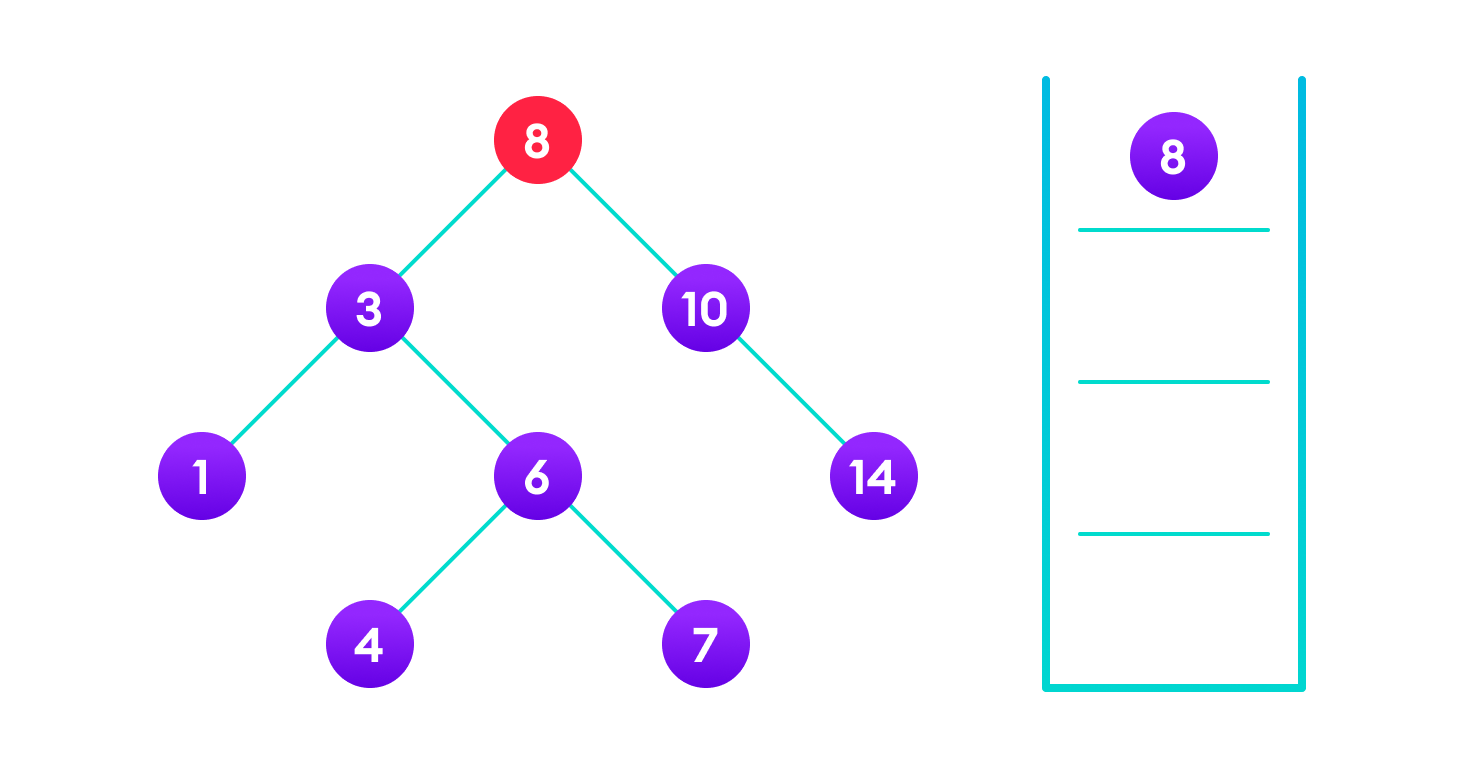
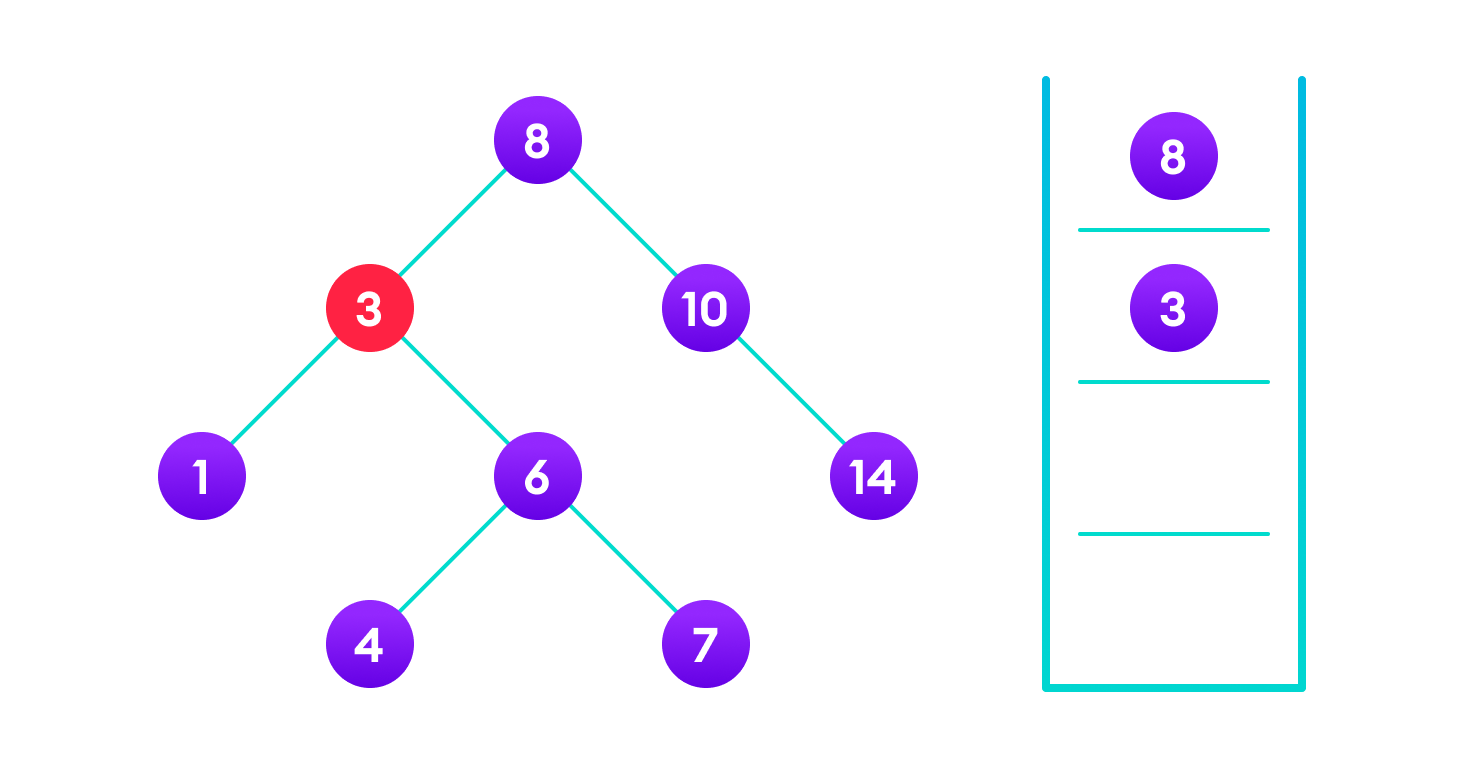
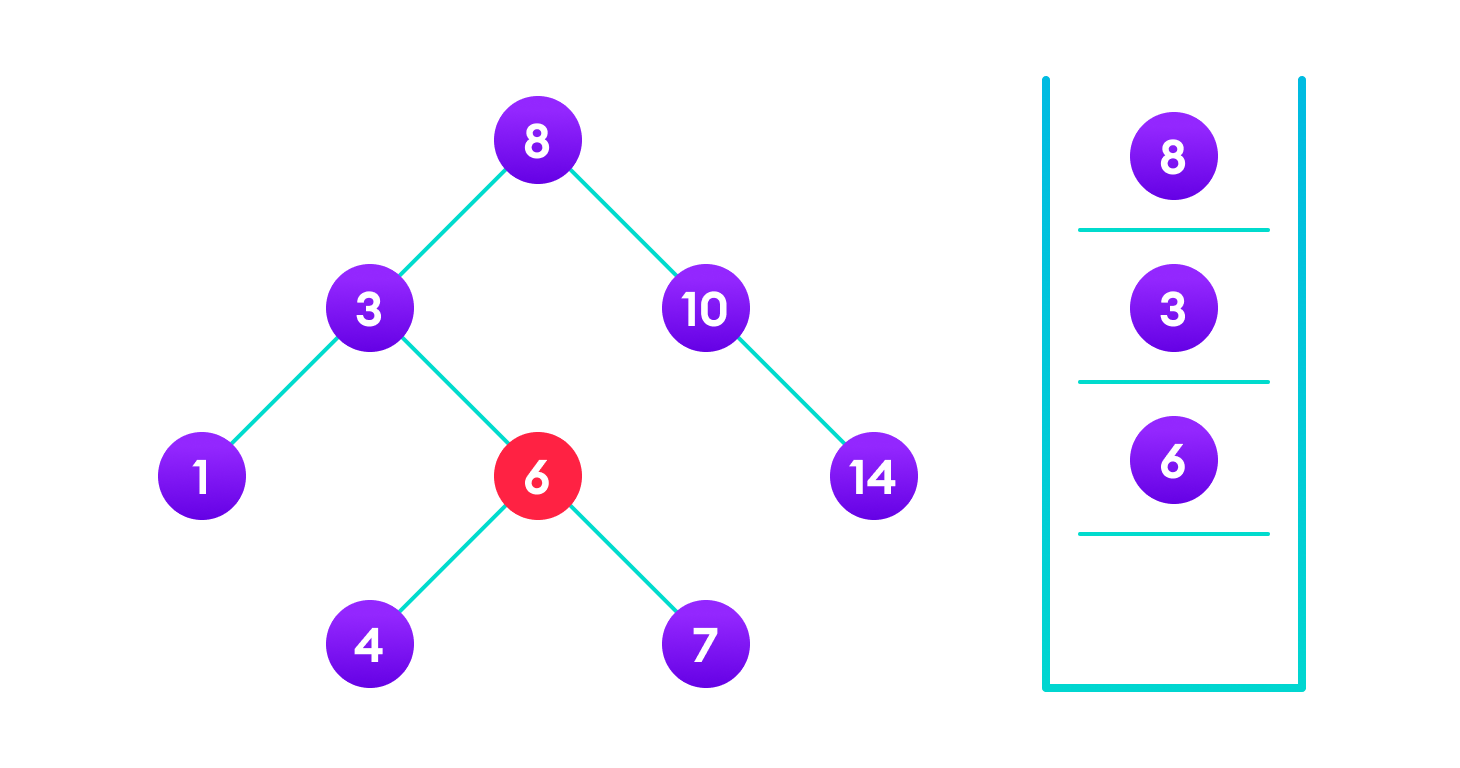

如果找到该值,我们将返回该值,以便在每个递归步骤中将其传播,如下图所示。
如果您可能已经注意到,我们已经四次调用return search(struct node *)。当我们返回新节点或NULL时,该值会一次又一次返回,直到search(root)返回最终结果。
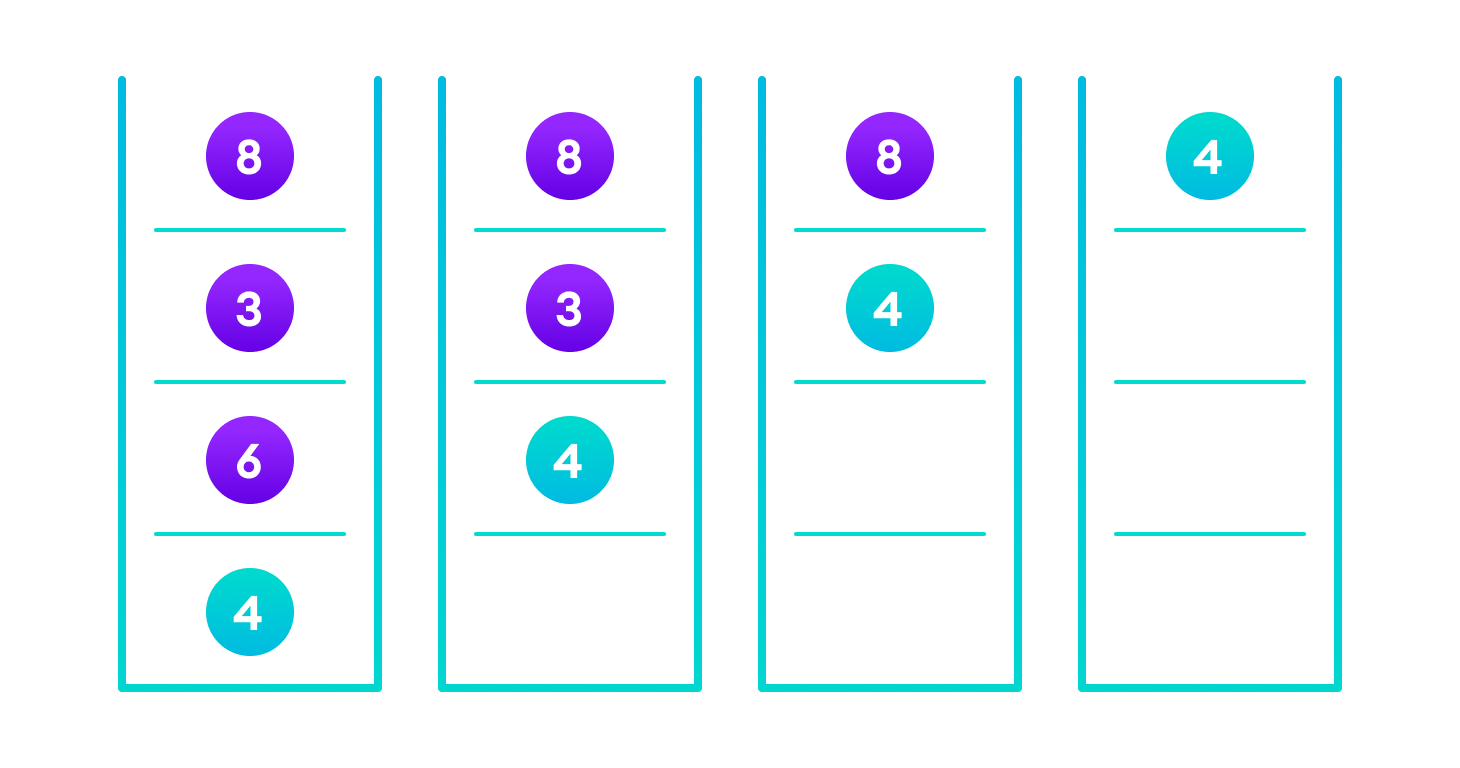
如果找不到该值,则最终到达叶节点的左或右子节点,该子节点为NULL,并传播并返回。
插入操作
在正确的位置插入值类似于搜索,因为我们尝试维护以下规则:左子树小于根,右子树大于根。
我们继续根据值去右子树或左子树,当我们到达左或右子树为null的点时,我们将新节点放在那里。
算法:
If node == NULL
return createNode(data)
if (data < node->data)
node->left = insert(node->left, data);
else if (data > node->data)
node->right = insert(node->right, data);
return node;该算法并不像看起来那样简单。让我们尝试可视化如何将数字添加到现有的BST。
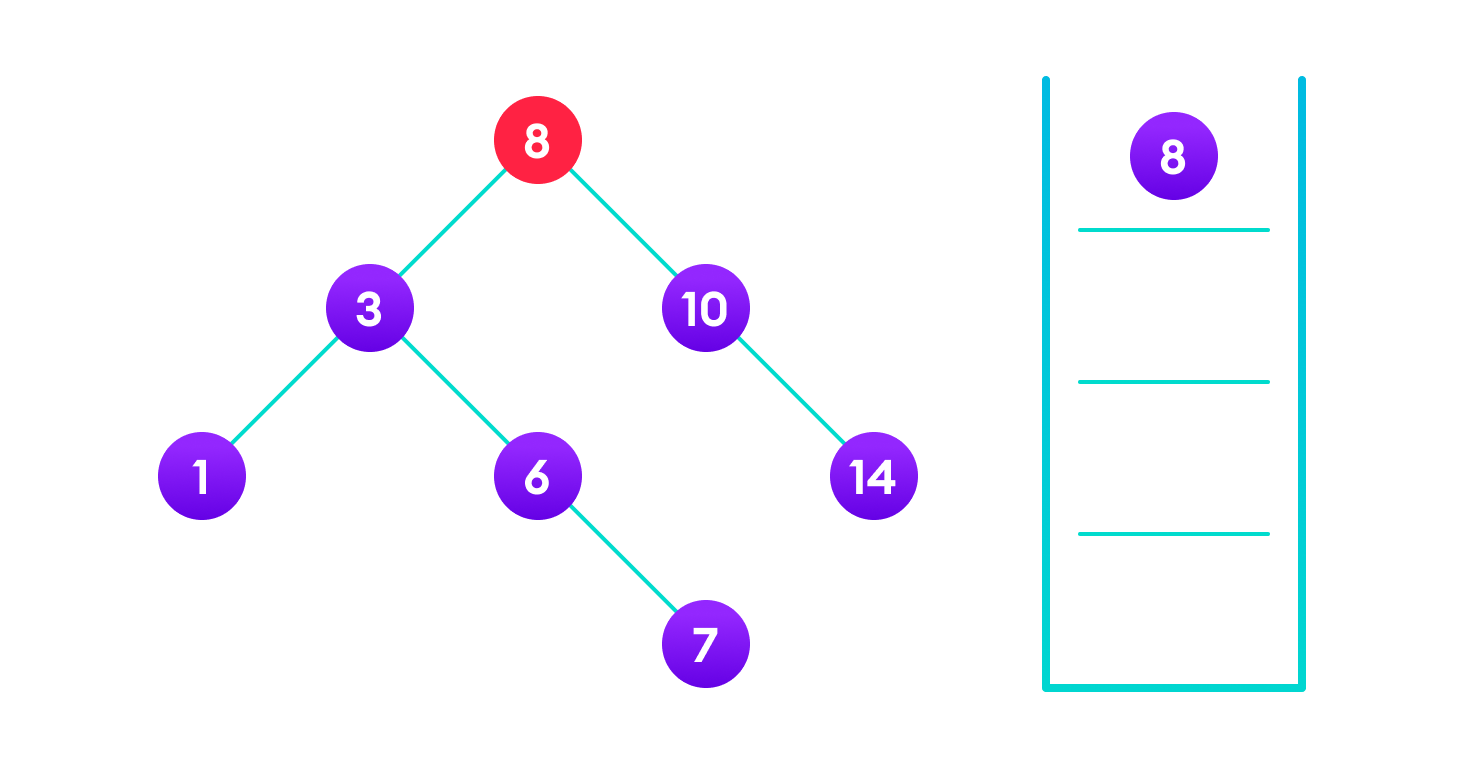
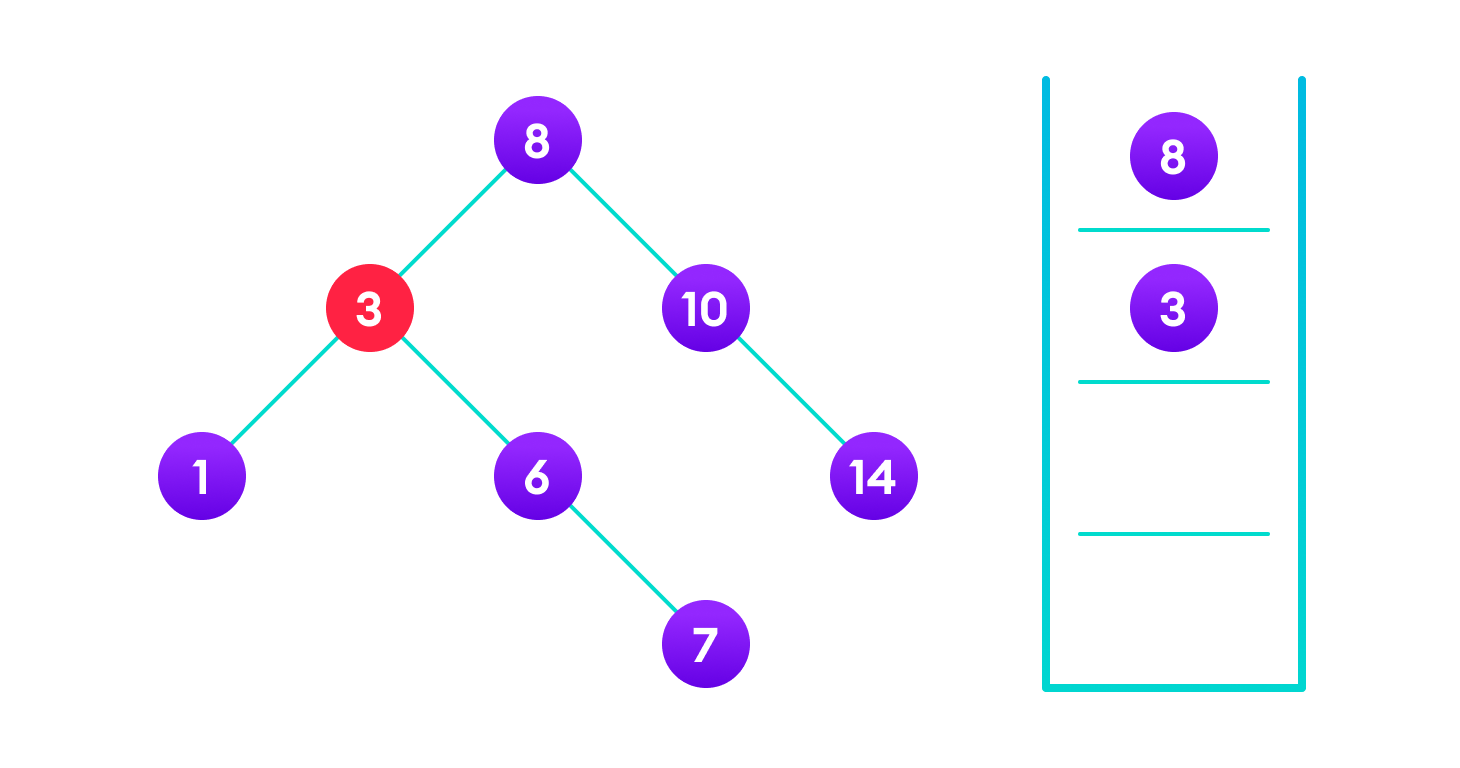
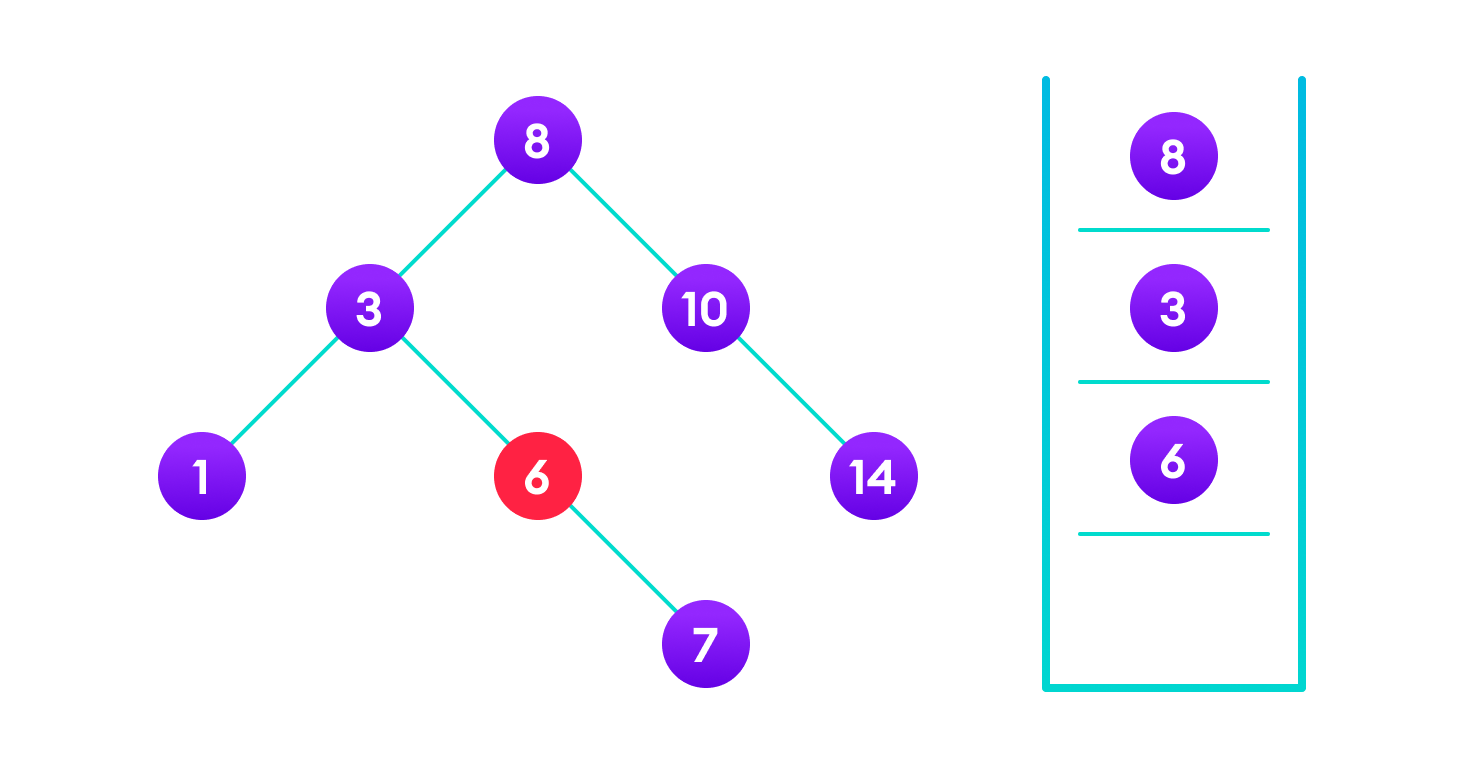
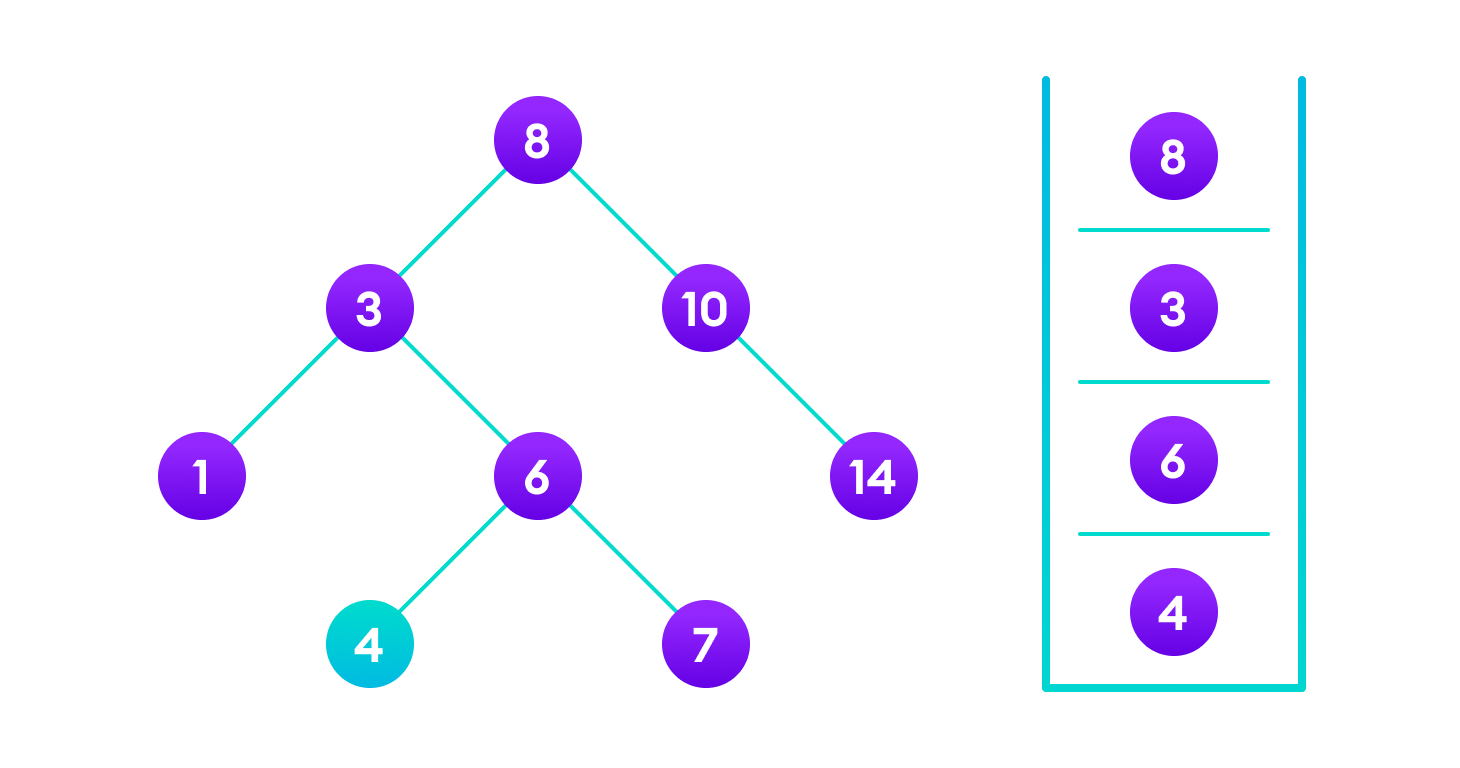
我们已经附加了节点,但是仍然必须退出该函数,而不会损坏树的其余部分。这是return node;最后派上用场。在NULL的情况下,将返回新创建的节点并将其附加到父节点,否则在返回到根节点之前,将返回相同的节点而没有任何更改。
这可以确保当我们向后移动树时,其他节点连接不会更改。
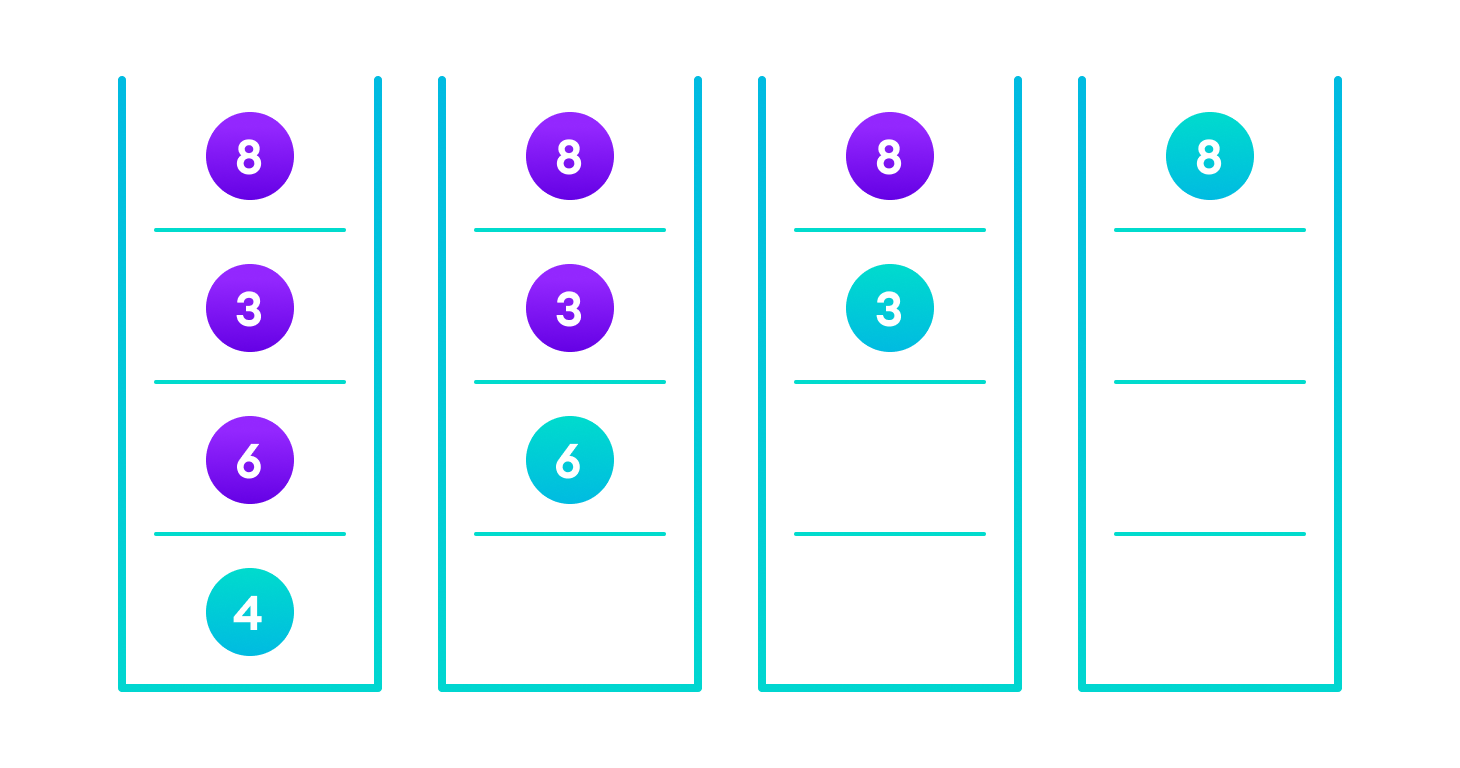
删除操作
从二进制搜索树中删除节点的情况有三种。
案例一
在第一种情况下,要删除的节点是叶节点。在这种情况下,只需从树中删除该节点即可。
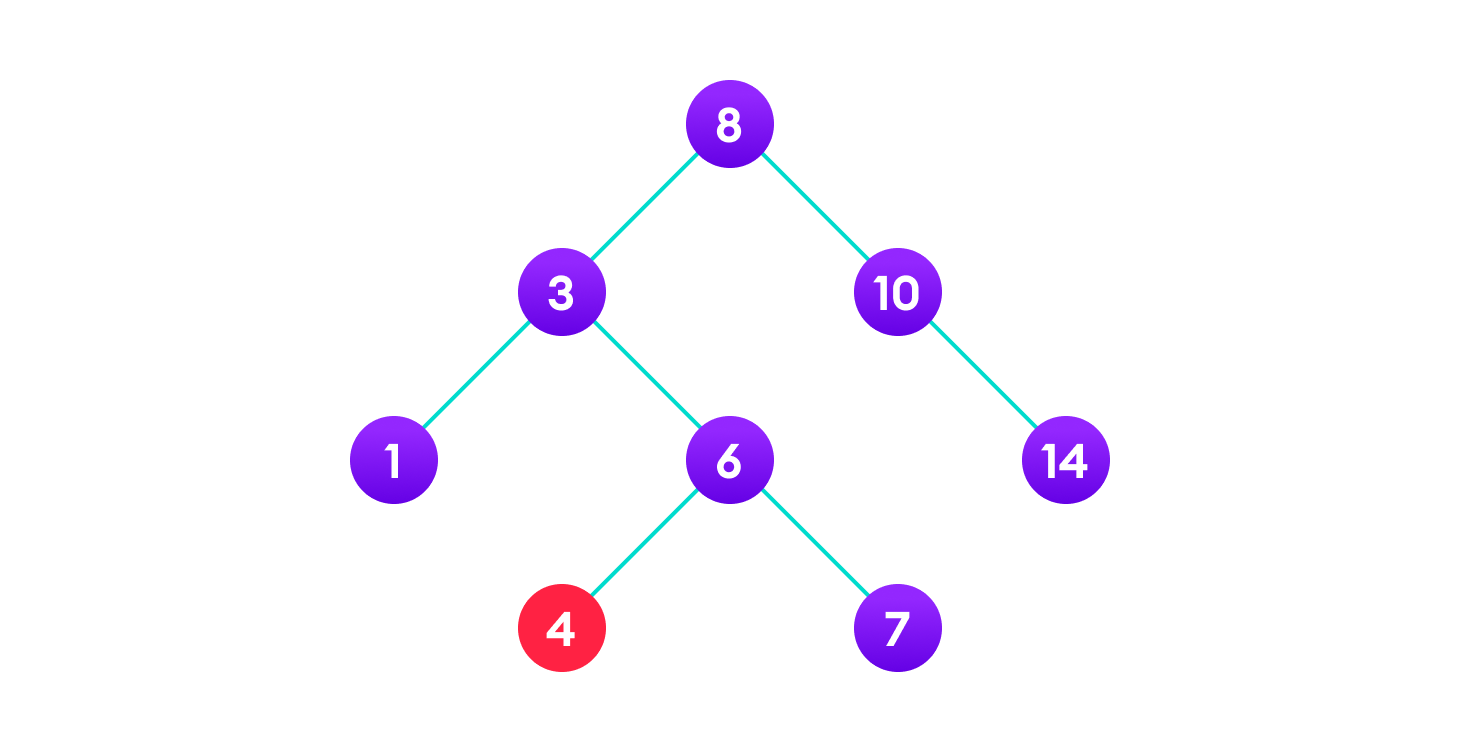
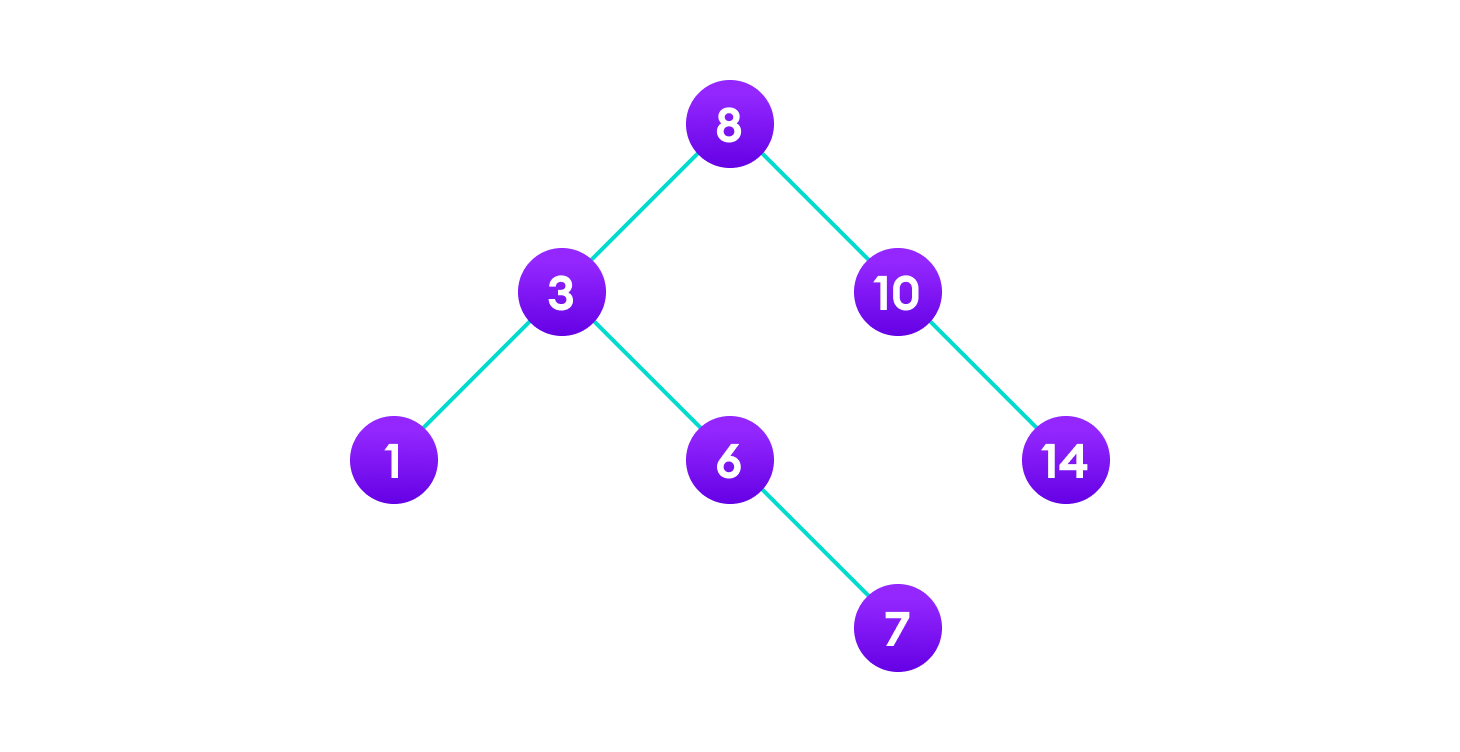
案例二
在第二种情况下,要删除的节点只有一个子节点。在这种情况下,请执行以下步骤:
- 将该节点替换为其子节点。
- 从其原始位置删除子节点。
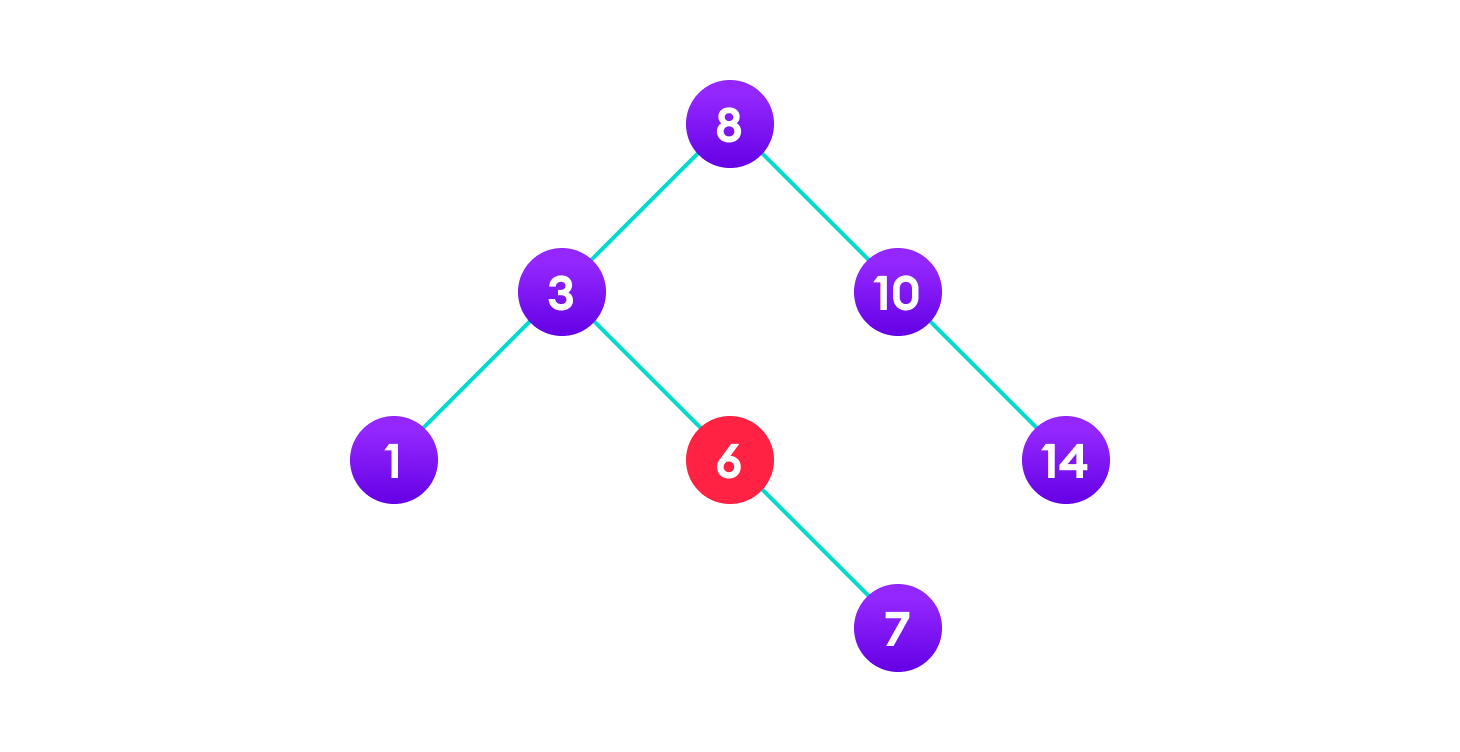
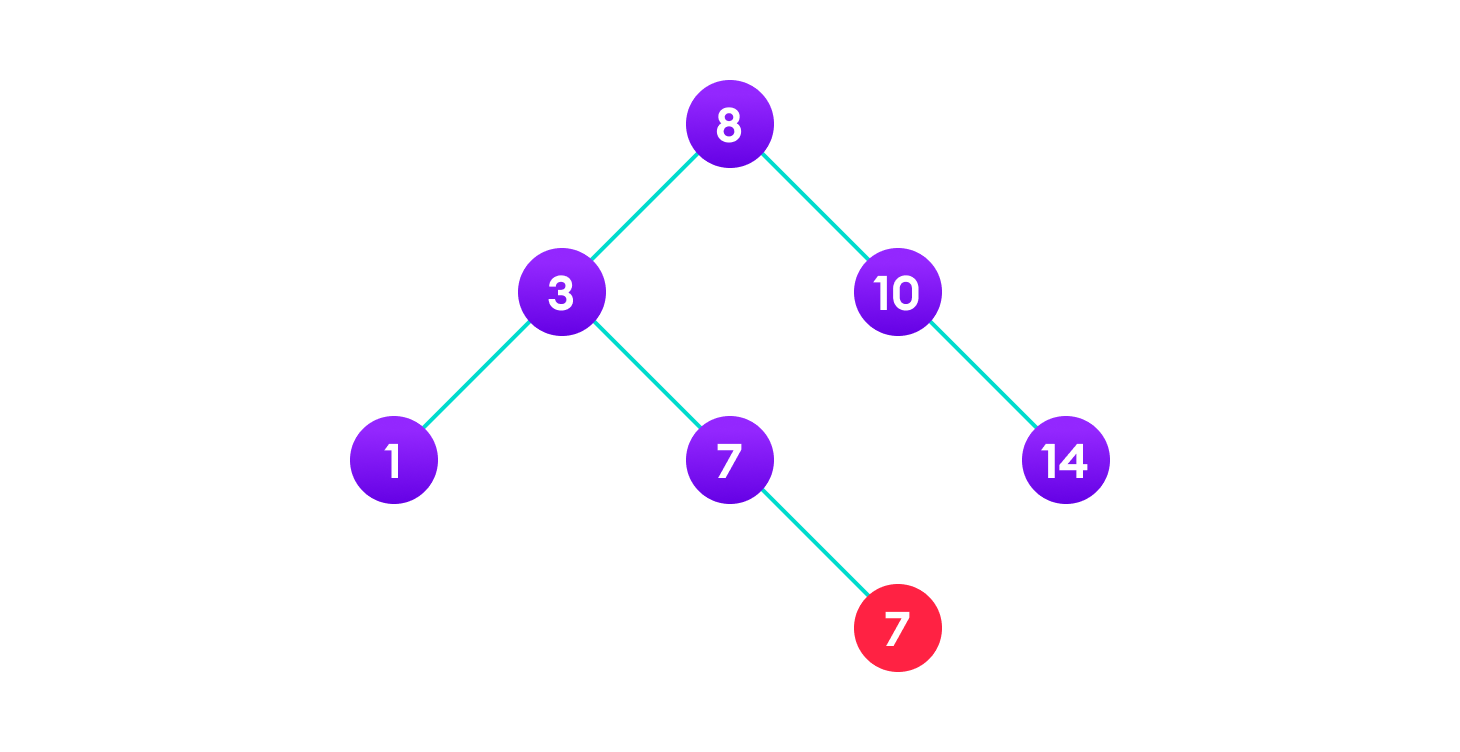

情况三
在第三种情况下,要删除的节点有两个孩子。在这种情况下,请执行以下步骤:
- 获取该节点的有序后继者。
- 将节点替换为有序后继节点。
- 从原始位置卸下有序后继器。
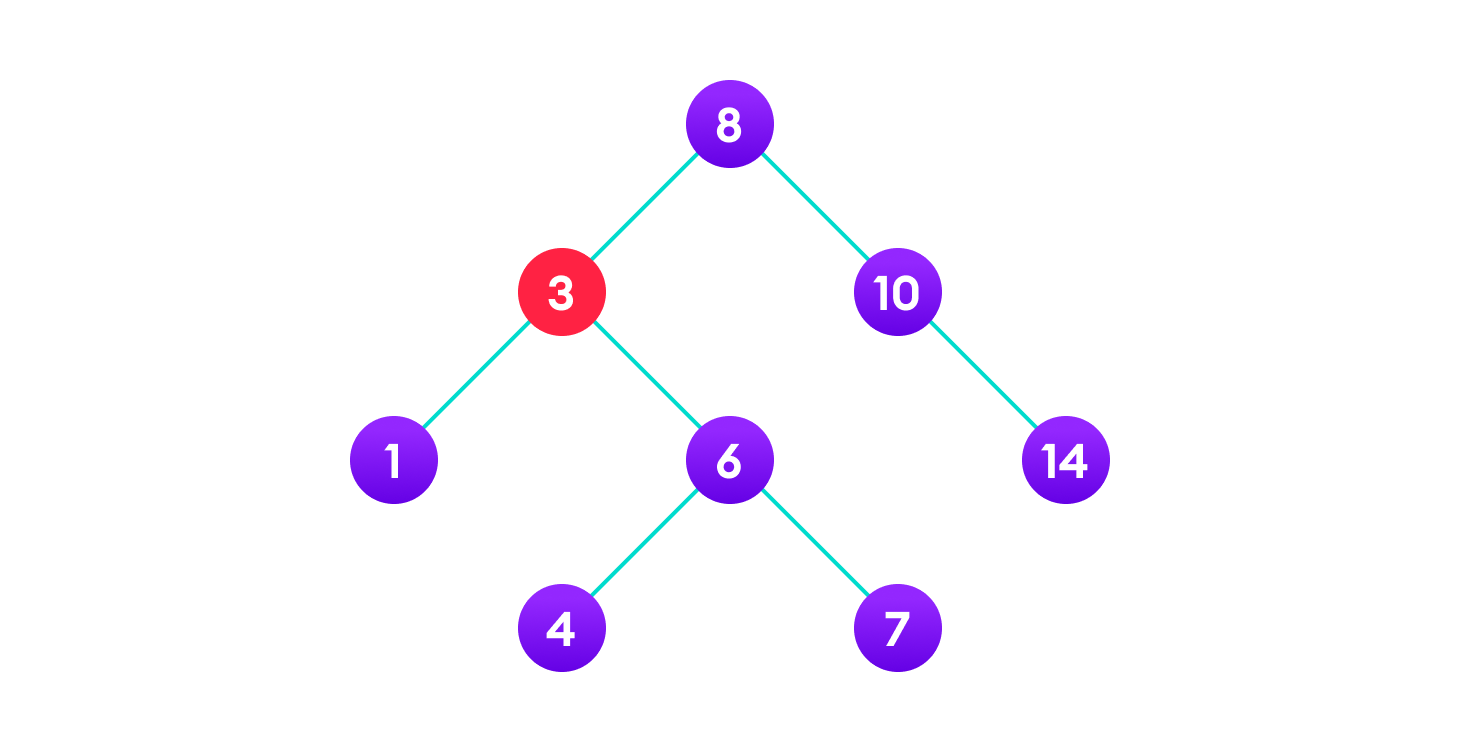
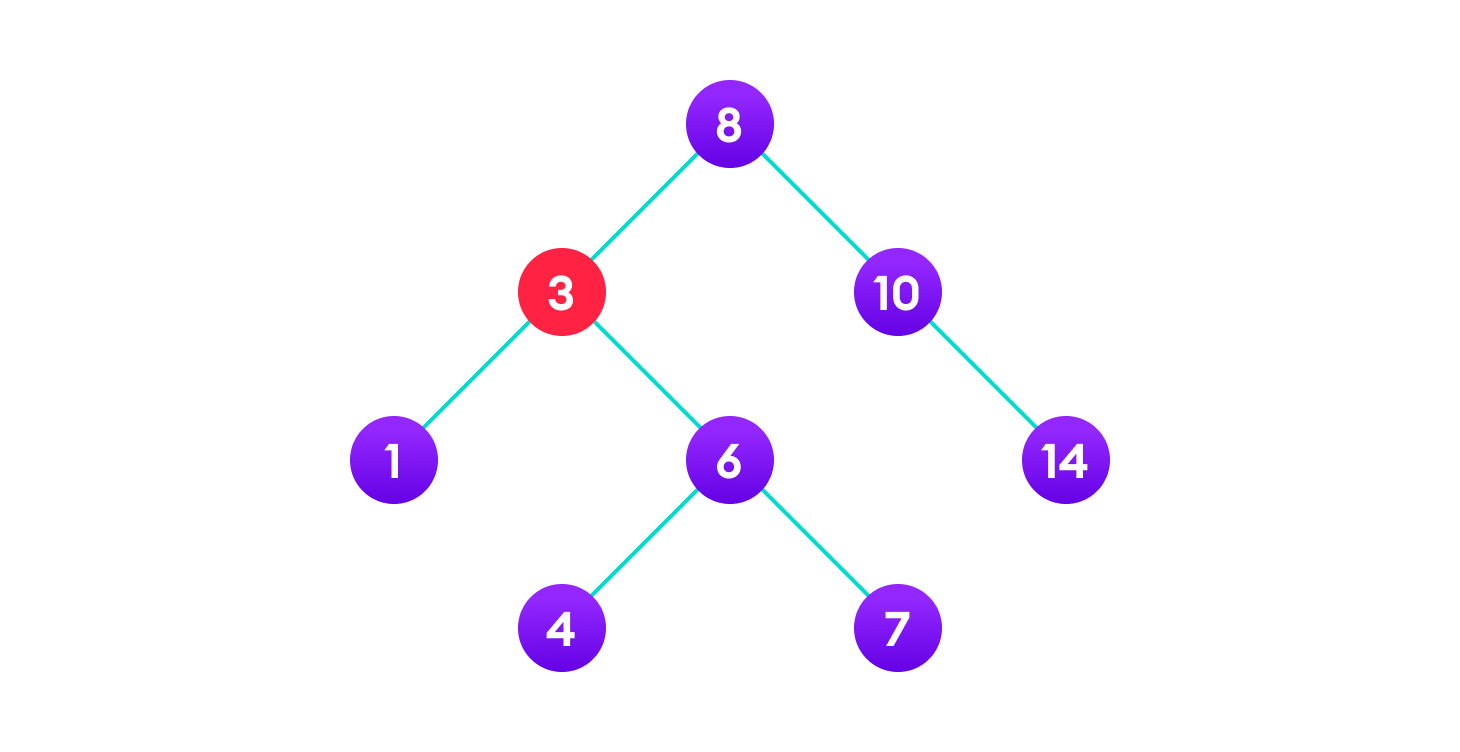
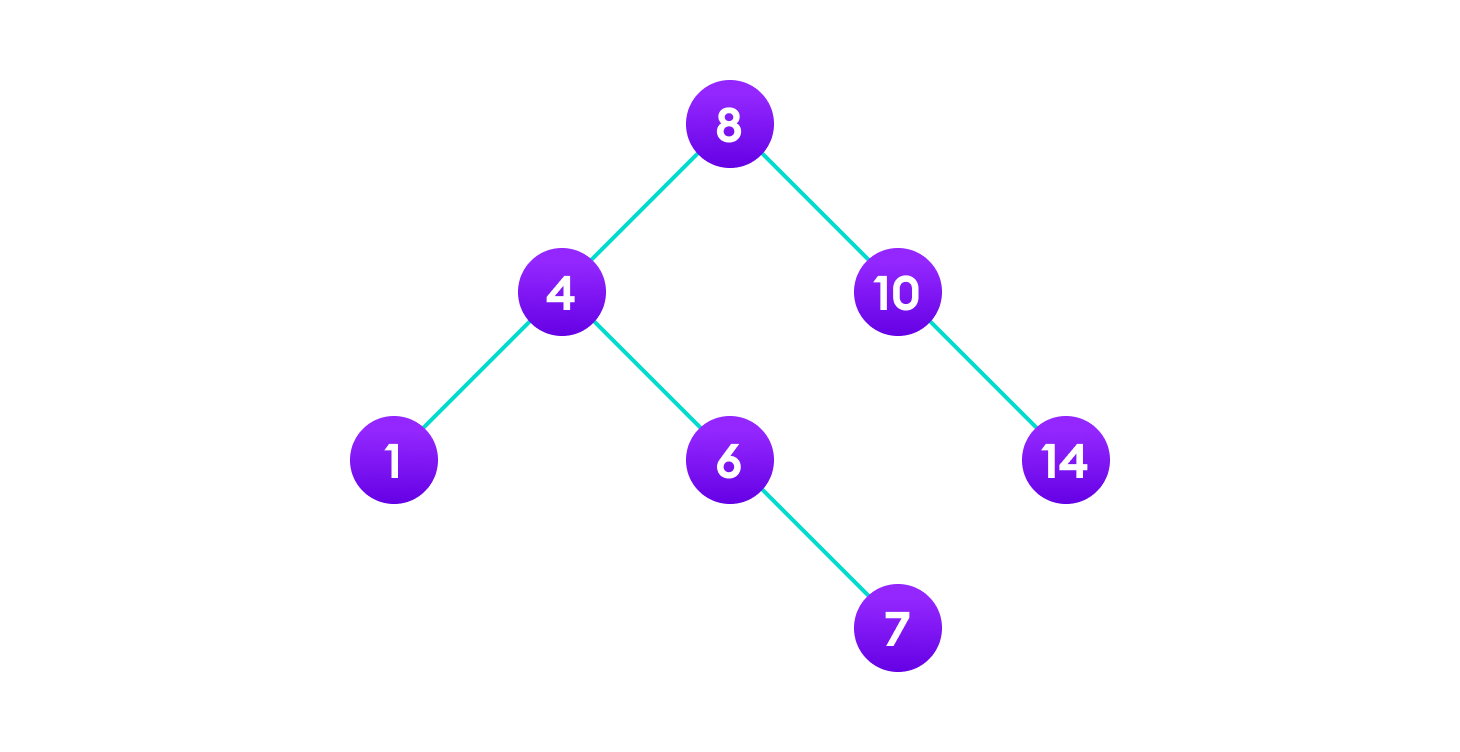
Python,Java和C / C++示例
# Binary Search Tree operations in Python
# Create a node
class Node:
def __init__(self, key):
self.key = key
self.left = None
self.right = None
# Inorder traversal
def inorder(root):
if root is not None:
# Traverse left
inorder(root.left)
# Traverse root
print(str(root.key) + "->", end=' ')
# Traverse right
inorder(root.right)
# Insert a node
def insert(node, key):
# Return a new node if the tree is empty
if node is None:
return Node(key)
# Traverse to the right place and insert the node
if key < node.key:
node.left = insert(node.left, key)
else:
node.right = insert(node.right, key)
return node
# Find the inorder successor
def minValueNode(node):
current = node
# Find the leftmost leaf
while(current.left is not None):
current = current.left
return current
# Deleting a node
def deleteNode(root, key):
# Return if the tree is empty
if root is None:
return root
# Find the node to be deleted
if key < root.key:
root.left = deleteNode(root.left, key)
elif(key > root.key):
root.right = deleteNode(root.right, key)
else:
# If the node is with only one child or no child
if root.left is None:
temp = root.right
root = None
return temp
elif root.right is None:
temp = root.left
root = None
return temp
# If the node has two children,
# place the inorder successor in position of the node to be deleted
temp = minValueNode(root.right)
root.key = temp.key
# Delete the inorder successor
root.right = deleteNode(root.right, temp.key)
return root
root = None
root = insert(root, 8)
root = insert(root, 3)
root = insert(root, 1)
root = insert(root, 6)
root = insert(root, 7)
root = insert(root, 10)
root = insert(root, 14)
root = insert(root, 4)
print("Inorder traversal: ", end=' ')
inorder(root)
print("\nDelete 10")
root = deleteNode(root, 10)
print("Inorder traversal: ", end=' ')
inorder(root)// Binary Search Tree operations in Java
class BinarySearchTree {
class Node {
int key;
Node left, right;
public Node(int item) {
key = item;
left = right = null;
}
}
Node root;
BinarySearchTree() {
root = null;
}
void insert(int key) {
root = insertKey(root, key);
}
// Insert key in the tree
Node insertKey(Node root, int key) {
// Return a new node if the tree is empty
if (root == null) {
root = new Node(key);
return root;
}
// Traverse to the right place and insert the node
if (key < root.key)
root.left = insertKey(root.left, key);
else if (key > root.key)
root.right = insertKey(root.right, key);
return root;
}
void inorder() {
inorderRec(root);
}
// Inorder Traversal
void inorderRec(Node root) {
if (root != null) {
inorderRec(root.left);
System.out.print(root.key + " -> ");
inorderRec(root.right);
}
}
void deleteKey(int key) {
root = deleteRec(root, key);
}
Node deleteRec(Node root, int key) {
// Return if the tree is empty
if (root == null)
return root;
// Find the node to be deleted
if (key < root.key)
root.left = deleteRec(root.left, key);
else if (key > root.key)
root.right = deleteRec(root.right, key);
else {
// If the node is with only one child or no child
if (root.left == null)
return root.right;
else if (root.right == null)
return root.left;
// If the node has two children
// Place the inorder successor in position of the node to be deleted
root.key = minValue(root.right);
// Delete the inorder successor
root.right = deleteRec(root.right, root.key);
}
return root;
}
// Find the inorder successor
int minValue(Node root) {
int minv = root.key;
while (root.left != null) {
minv = root.left.key;
root = root.left;
}
return minv;
}
// Driver Program to test above functions
public static void main(String[] args) {
BinarySearchTree tree = new BinarySearchTree();
tree.insert(8);
tree.insert(3);
tree.insert(1);
tree.insert(6);
tree.insert(7);
tree.insert(10);
tree.insert(14);
tree.insert(4);
System.out.print("Inorder traversal: ");
tree.inorder();
System.out.println("\n\nAfter deleting 10");
tree.deleteKey(10);
System.out.print("Inorder traversal: ");
tree.inorder();
}
}// Binary Search Tree operations in C
#include
#include
struct node {
int key;
struct node *left, *right;
};
// Create a node
struct node *newNode(int item) {
struct node *temp = (struct node *)malloc(sizeof(struct node));
temp->key = item;
temp->left = temp->right = NULL;
return temp;
}
// Inorder Traversal
void inorder(struct node *root) {
if (root != NULL) {
// Traverse left
inorder(root->left);
// Traverse root
printf("%d -> ", root->key);
// Traverse right
inorder(root->right);
}
}
// Insert a node
struct node *insert(struct node *node, int key) {
// Return a new node if the tree is empty
if (node == NULL) return newNode(key);
// Traverse to the right place and insert the node
if (key < node->key)
node->left = insert(node->left, key);
else
node->right = insert(node->right, key);
return node;
}
// Find the inorder successor
struct node *minValueNode(struct node *node) {
struct node *current = node;
// Find the leftmost leaf
while (current && current->left != NULL)
current = current->left;
return current;
}
// Deleting a node
struct node *deleteNode(struct node *root, int key) {
// Return if the tree is empty
if (root == NULL) return root;
// Find the node to be deleted
if (key < root->key)
root->left = deleteNode(root->left, key);
else if (key > root->key)
root->right = deleteNode(root->right, key);
else {
// If the node is with only one child or no child
if (root->left == NULL) {
struct node *temp = root->right;
free(root);
return temp;
} else if (root->right == NULL) {
struct node *temp = root->left;
free(root);
return temp;
}
// If the node has two children
struct node *temp = minValueNode(root->right);
// Place the inorder successor in position of the node to be deleted
root->key = temp->key;
// Delete the inorder successor
root->right = deleteNode(root->right, temp->key);
}
return root;
}
// Driver code
int main() {
struct node *root = NULL;
root = insert(root, 8);
root = insert(root, 3);
root = insert(root, 1);
root = insert(root, 6);
root = insert(root, 7);
root = insert(root, 10);
root = insert(root, 14);
root = insert(root, 4);
printf("Inorder traversal: ");
inorder(root);
printf("\nAfter deleting 10\n");
root = deleteNode(root, 10);
printf("Inorder traversal: ");
inorder(root);
} // Binary Search Tree operations in C++
#include
using namespace std;
struct node {
int key;
struct node *left, *right;
};
// Create a node
struct node *newNode(int item) {
struct node *temp = (struct node *)malloc(sizeof(struct node));
temp->key = item;
temp->left = temp->right = NULL;
return temp;
}
// Inorder Traversal
void inorder(struct node *root) {
if (root != NULL) {
// Traverse left
inorder(root->left);
// Traverse root
cout << root->key << " -> ";
// Traverse right
inorder(root->right);
}
}
// Insert a node
struct node *insert(struct node *node, int key) {
// Return a new node if the tree is empty
if (node == NULL) return newNode(key);
// Traverse to the right place and insert the node
if (key < node->key)
node->left = insert(node->left, key);
else
node->right = insert(node->right, key);
return node;
}
// Find the inorder successor
struct node *minValueNode(struct node *node) {
struct node *current = node;
// Find the leftmost leaf
while (current && current->left != NULL)
current = current->left;
return current;
}
// Deleting a node
struct node *deleteNode(struct node *root, int key) {
// Return if the tree is empty
if (root == NULL) return root;
// Find the node to be deleted
if (key < root->key)
root->left = deleteNode(root->left, key);
else if (key > root->key)
root->right = deleteNode(root->right, key);
else {
// If the node is with only one child or no child
if (root->left == NULL) {
struct node *temp = root->right;
free(root);
return temp;
} else if (root->right == NULL) {
struct node *temp = root->left;
free(root);
return temp;
}
// If the node has two children
struct node *temp = minValueNode(root->right);
// Place the inorder successor in position of the node to be deleted
root->key = temp->key;
// Delete the inorder successor
root->right = deleteNode(root->right, temp->key);
}
return root;
}
// Driver code
int main() {
struct node *root = NULL;
root = insert(root, 8);
root = insert(root, 3);
root = insert(root, 1);
root = insert(root, 6);
root = insert(root, 7);
root = insert(root, 10);
root = insert(root, 14);
root = insert(root, 4);
cout << "Inorder traversal: ";
inorder(root);
cout << "\nAfter deleting 10\n";
root = deleteNode(root, 10);
cout << "Inorder traversal: ";
inorder(root);
} 二叉搜索树的复杂性
时间复杂度
| Operation | Best Case Complexity | Average Case Complexity | Worst Case Complexity |
| Search | O(log n) | O(log n) | O(n) |
| Insertion | O(log n) | O(log n) | O(n) |
| Deletion | O(log n) | O(log n) | O(n) |
在此, n是树中节点的数量。
空间复杂度
所有操作的空间复杂度为O(n) 。
二进制搜索树应用
- 在数据库中进行多级索引
- 用于动态排序
- 用于管理Unix内核中的虚拟内存区域